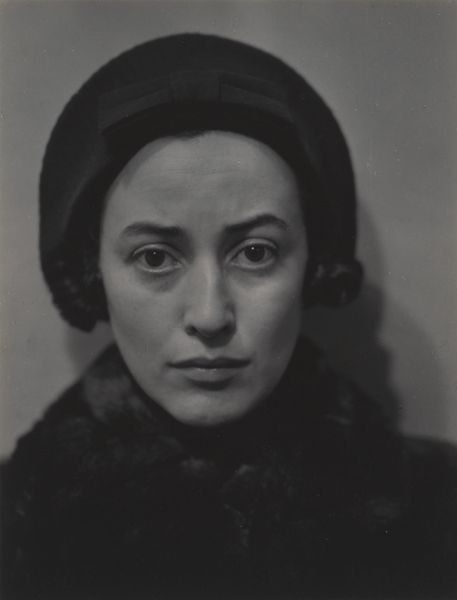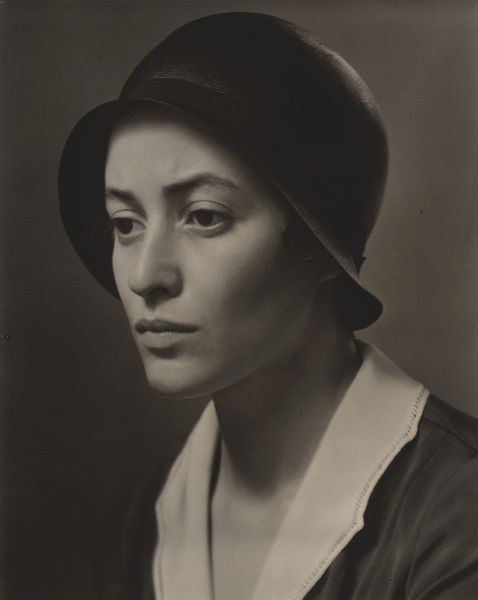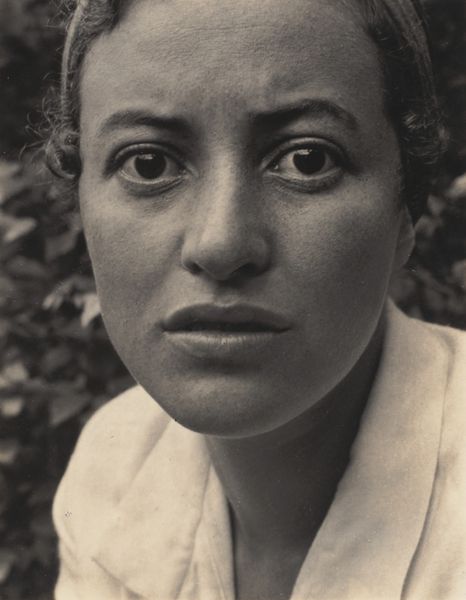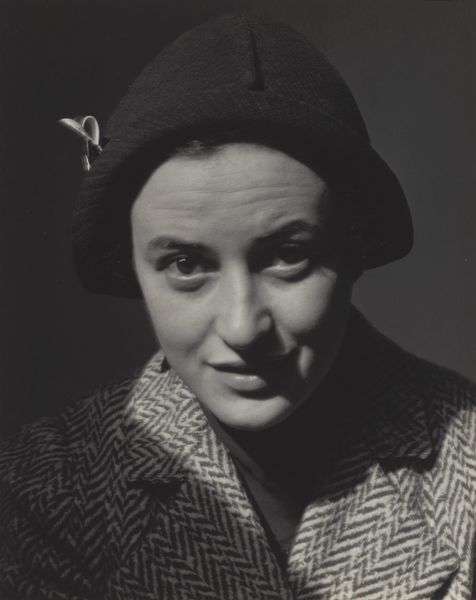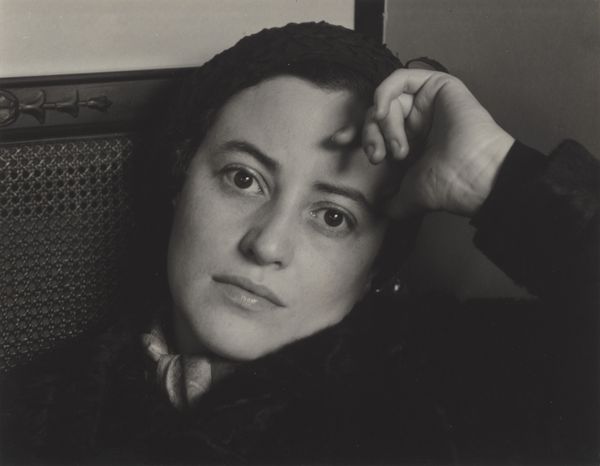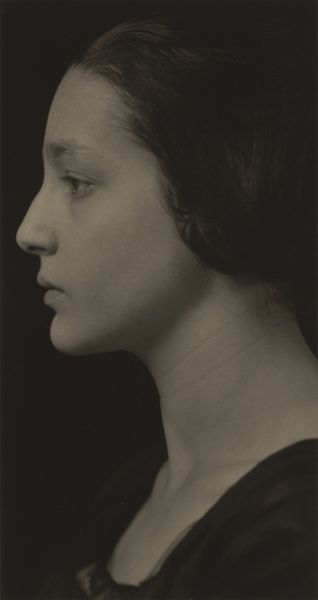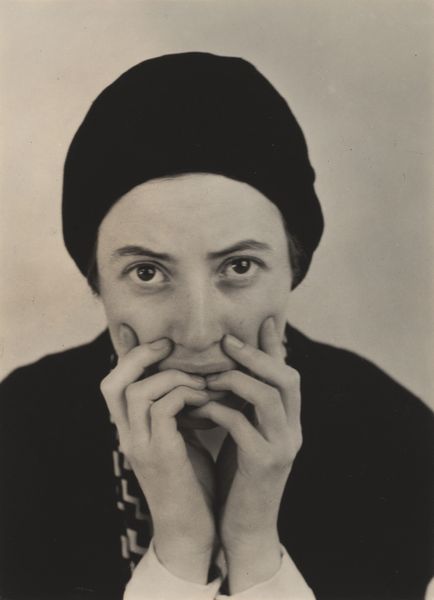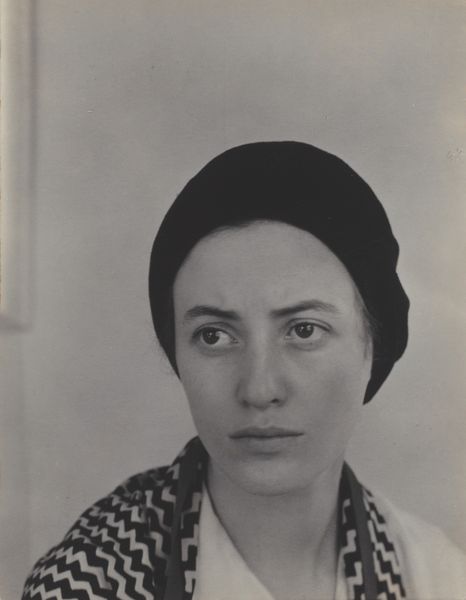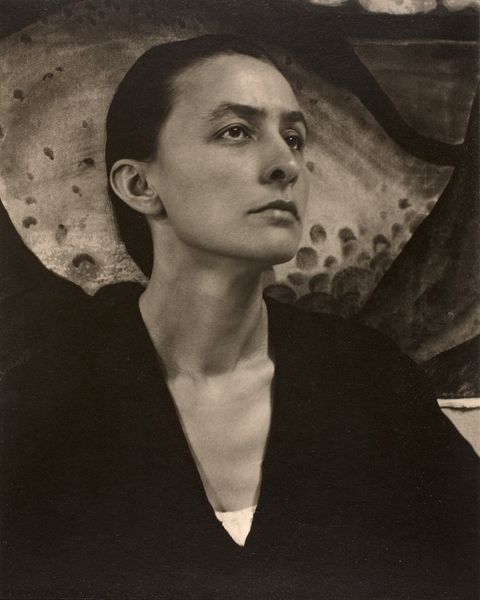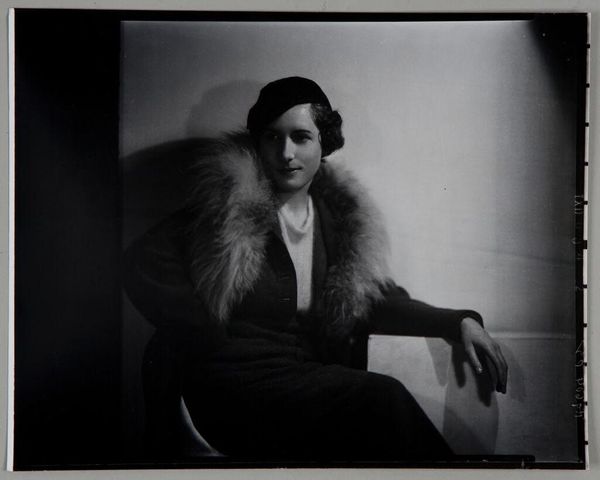
photography, gelatin-silver-print
#
portrait
#
black and white photography
#
pictorialism
#
portrait
#
photography
#
intimism
#
gelatin-silver-print
#
modernism
Dimensions: sheet (trimmed to image): 11.6 × 9.4 cm (4 9/16 × 3 11/16 in.) mount: 32.1 × 25.4 cm (12 5/8 × 10 in.)
Copyright: National Gallery of Art: CC0 1.0
Editor: Here we have Alfred Stieglitz’s gelatin-silver print, "Dorothy Norman," from 1936. The strong contrast between light and shadow gives it such a dramatic feel. What strikes you about this portrait? Curator: The materiality interests me. Consider the gelatin-silver process itself, a mass-produced technology enabling a specific aesthetic, distinct from earlier photographic processes. It also places it firmly within an industrialized culture. Notice how Stieglitz has carefully manipulated the light. Why do you think he chose to expose Dorothy Norman like that? Editor: Perhaps he was highlighting certain aspects of her personality or status? The stark light draws my eyes directly to her face, and also showcases the texture of her coat. Curator: Precisely. Look closely at the herringbone fabric. That pattern speaks of textiles, labour, and even commodity culture of the time. Consider the resources necessary to produce it. And don't ignore that she and Stieglitz later had a deep friendship and that their professional relationship furthered Norman's own artistic career. How does thinking about that power dynamic affect your perception of the image? Editor: That’s fascinating! Knowing about their relationship makes me question the nature of the portrait even further. Was it about elevating Norman or simply a formal experiment playing with class? Curator: Both, potentially. By understanding the socio-economic implications inherent within the materials and the relationship dynamic, we unveil layered meaning in the print, not merely a record, but a social document. Editor: I never thought about portraits this way. Considering the labour and social context has really changed how I see the piece. Curator: Indeed. It’s crucial to move past mere visual appreciation and examine the structures and labour inherent within a work to grasp a fuller meaning.
Comments
No comments
Be the first to comment and join the conversation on the ultimate creative platform.


